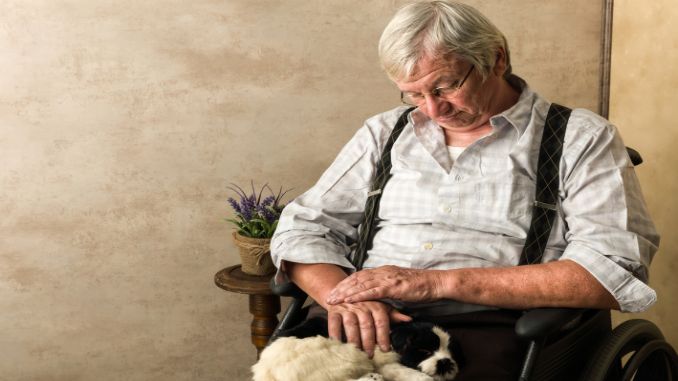If you're dealing with a groin injury affecting your daily life, this guide is for you. It's packed with expert Groin Injury Exercises aimed at healing and strengthening your groin.
You'll learn simple yet effective stretches and strength exercises to ease pain and speed recovery. Hip abduction, hip adductor stretch, and single leg lift exercises are suitable for everyone, regardless of fitness level, and are designed to improve your groin's strength, flexibility, and stability.
Following these Groin Injury Exercise recommendations can heal your groin injury and prevent future ones, helping you return to normal activities without pain.
Understanding Groin Injuries
Groin injuries can severely limit movement and daily activities. Understanding their causes is key to managing and preventing them.
The groin area comprises a complex network of muscles, tendons, and ligaments supporting the hip joint.
Injuries often result from overuse, sudden movements, or direct trauma. Common types include strains, sprains, and hernias, each causing pain and mobility issues.
Importance Of Exercise In Groin Injury Recovery And Prevention
Exercise plays a crucial role in recovering and preventing groin injuries. It helps strengthen the muscles, improve flexibility, and enhance stability in the groin area.
By incorporating targeted exercises into your routine, you can rebuild strength, regain flexibility, and reduce the risk of future injuries.
Additionally, exercise promotes blood flow to the injured area, aiding healing and reducing inflammation [¹].
However, it is important to start slowly, listen to your body, and progress gradually to avoid aggravating the injury.
Consulting a healthcare professional or physiotherapist can guide the most effective exercises for your recovery and prevention plan.
Common Causes Of Groin Injuries
Understanding the common causes of groin injuries can help you identify potential risk factors and take necessary precautions to prevent them.
Some common causes include:
Addressing these causes and incorporating proper exercise techniques can significantly reduce the risk of groin injuries and promote a healthy recovery.
Stretching Exercises For Groin Flexibility And Mobility
When dealing with a groin injury, engaging this Groin Injury Exercises that promote healing without causing further strain is crucial.
Here's how you can categorize your exercise routine to aid recovery from groin strain:
1. Supine Butterfly Pose
- Lie on your back with your knees bent and feet flat on the floor.
- Place your hands by your ears or interlace your fingers behind your head.
- Tighten your core and open your knees to the side, bringing the soles of your feet together.
- Hold the position for several deep belly breaths, in through your nose and out through your mouth.
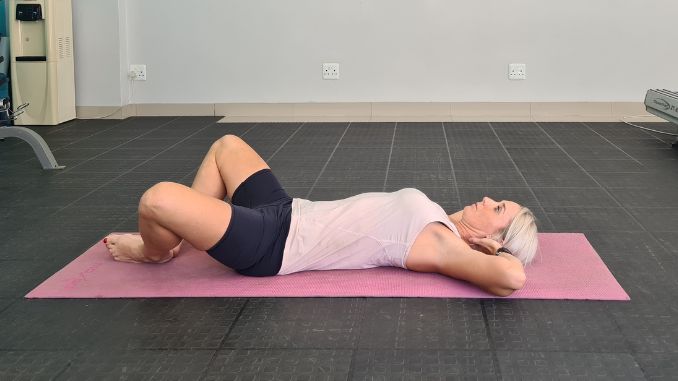
2. Half Split
- Begin this Groin Injury Exercise in an upright standing position with your feet hip-width apart, maintaining good alignment with your head, shoulders, hips, and legs.
- Engage your core.
- Take a big step back with your right foot and lower your knee to the ground while keeping your left leg extended in front.
- Place your hands on the side for support, then press your left heel on the ground to point your toes towards the ceiling.
- To intensify the stretch, pull your toes toward you.
- Hold this position for several deep breaths, in through your nose and out through your mouth.
- Relax and repeat the movement on the opposite side.
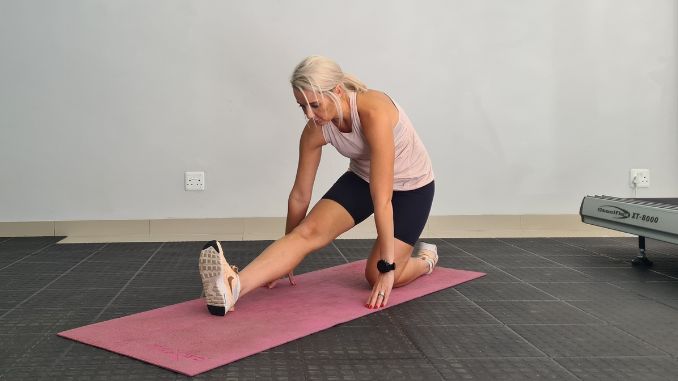
3. Seated Hip Abduction
For this groin injury exercises, you may use a resistance band. You can also do this on a chair.
- Begin this Groin Injury Exercises in an upright sitting position on a stability ball with your knees bent and feet flat on the floor.
- Maintain a proper alignment with your head, shoulders, and hips.
- Wrap the fabric resistance band around your legs, just above your knees.
- Place your hands on the side of the stability ball for support.
- Engage your core and slowly push outward with your knees against the band's resistance as far as comfortably possible while maintaining control.
- Return to the starting position and repeat the movement. Start with 1 set of 10-15 repetitions.
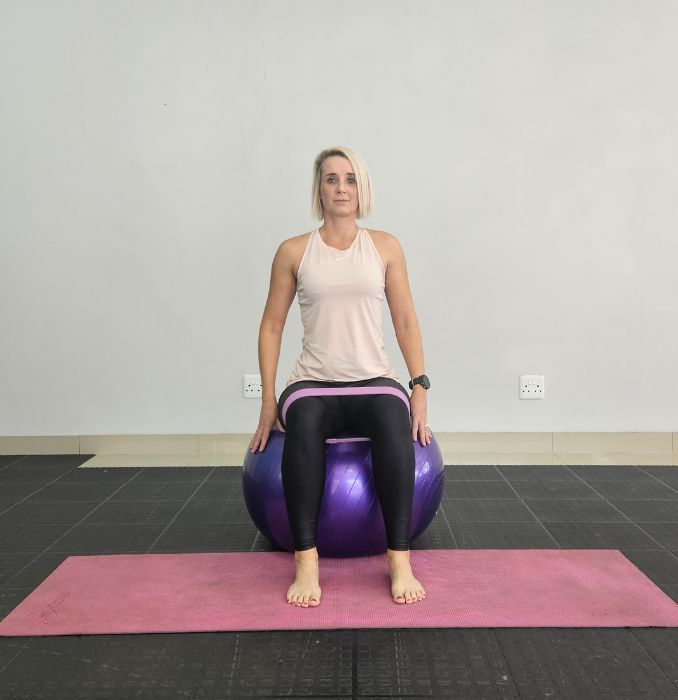
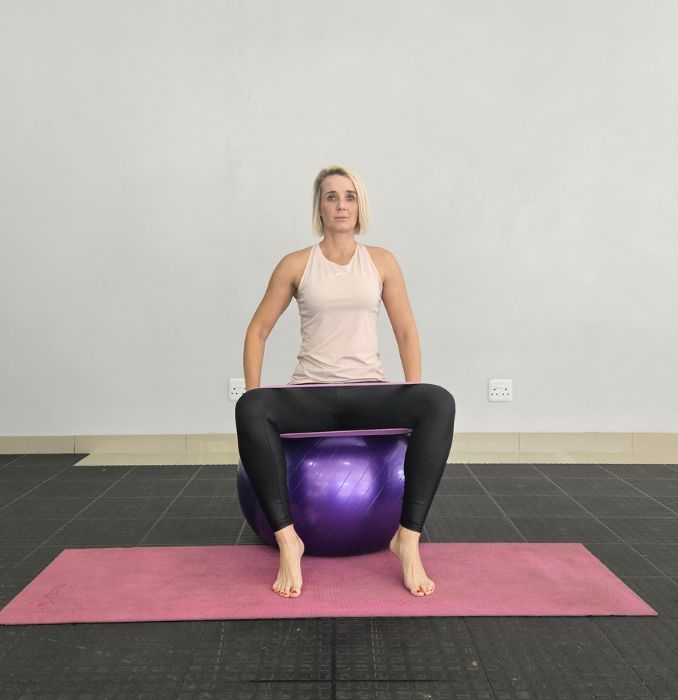
Strengthening Exercises For Groin Muscles
Strengthening exercises are crucial for rehabilitating groin injuries and preventing future ones. By targeting the muscles in the groin and surrounding areas, you can build strength, stability, and resilience to ease groin pain.
1. Clamshell
- Lie on your side on the floor with your knees bent and legs stacked together while keeping your ankles in line with your hips.
- Bend your bottom elbow and place your hands at the side of your head for support.
- Engage your core and lift your top knee towards the ceiling while keeping your other leg on the ground.
- Lower your leg and repeat 10 times. Relax and repeat the movement on the opposite side.
You may use resistance bands to add more resistance. This exercise exercises the hip muscles, particularly the gluteus medius.


2. Side Lunges
- Begin this Groin Injury Exercise in an upright standing position with your feet considerably wider than your shoulder-width apart.
- Maintain good alignment with your head, shoulders, and hips.
- Place your hands on your hips.
- Engage your core.
- Hinge through your hips to move your upper body forward, then shift your weight to your left leg and bend your left knee.
- Hold the position for a couple of seconds then repeat the movement on the opposite side.
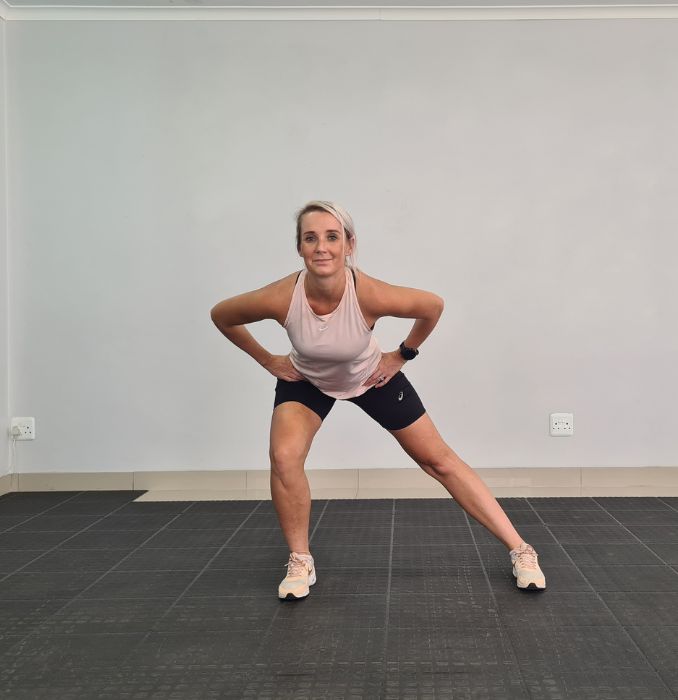
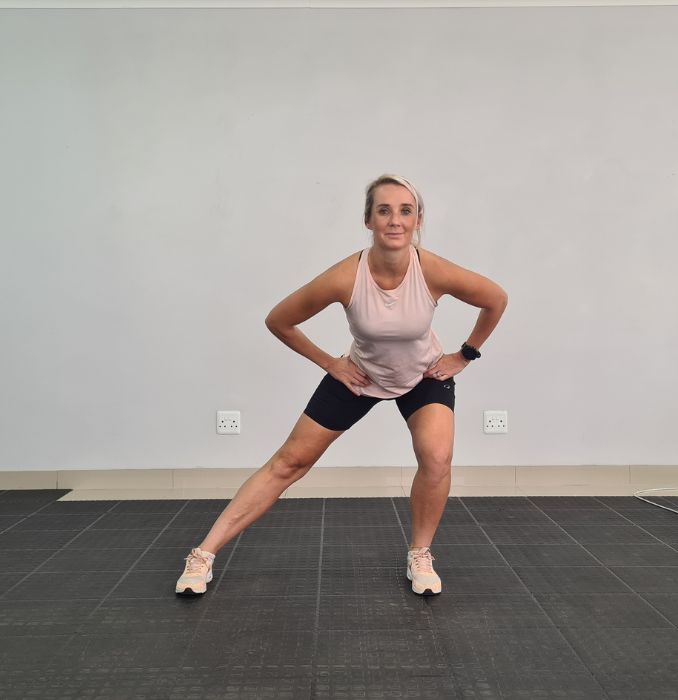
3. Single Leg Lifts
- Lie on your side on the floor with your legs straight and stacked together; make sure your injured leg is on top.
- Bend your bottom elbow and rest your head on top of it. Keep your shoulders, hips, and legs aligned.
- Engage your core and lift your injured leg carefully.
- Then, slowly lower it back down, returning to the starting position.
- Lastly, complete the movement for 5 repetitions.
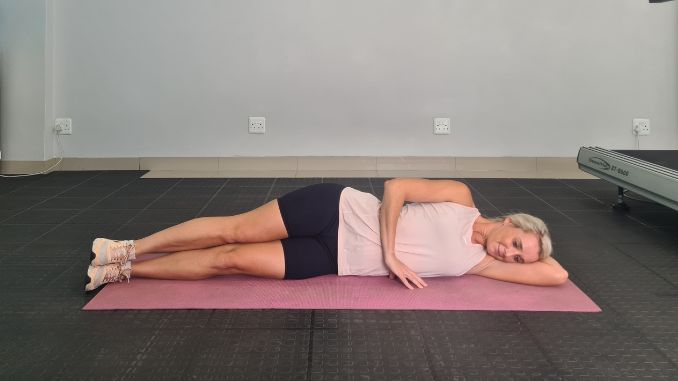
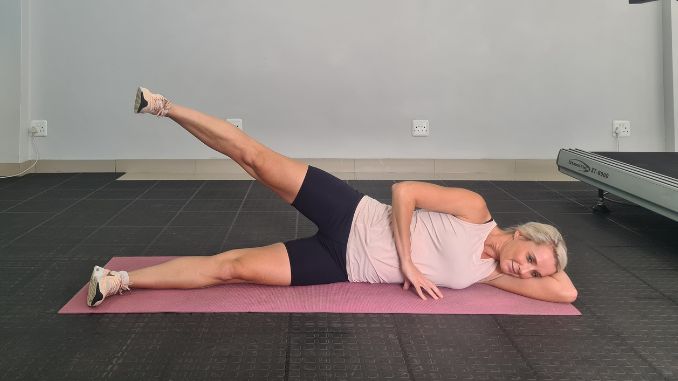
Perform these exercises 2-3 times a week, gradually increasing the number of repetitions and resistance as your strength improves. Focus on maintaining proper form and engaging the muscles in the thigh muscle groin area throughout each exercise.
Core Exercises For Groin Stability And Balance
A strong core is essential for maintaining balance and stability in the groin area. Strengthening your abdomen, lower back, and hip muscles can help support the groin muscles and reduce the risk of injury.
1. Forearm Plank
- Move into a forearm plank position on the floor with feet shoulder-width apart, maintaining a good alignment with your head, shoulders, hips, and legs.
- Engage your core, then press both knees to the floor.
- Hold this position for several deep belly breaths, in through your nose and out through your mouth.
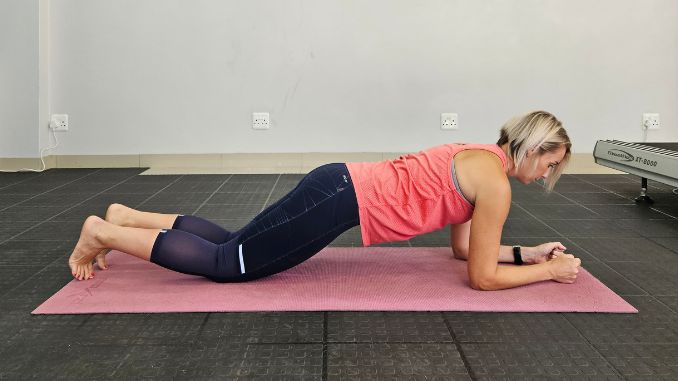
2. Russian Twists
- Begin this groin injury exercise in an upright sitting position on the floor, with your knees bent and feet flat on the floor.
- Maintain good alignment with your head, shoulders, and hips.
- Move your feet away from your body to increase the angle of your body.
- Hold your hands together at chest height and press your heels on the floor as you lean your upper body backward.
- Engage your core and twist your upper body from side to side. Repeat the movement as needed.
To make the exercise more challenging, you can grab some weights.
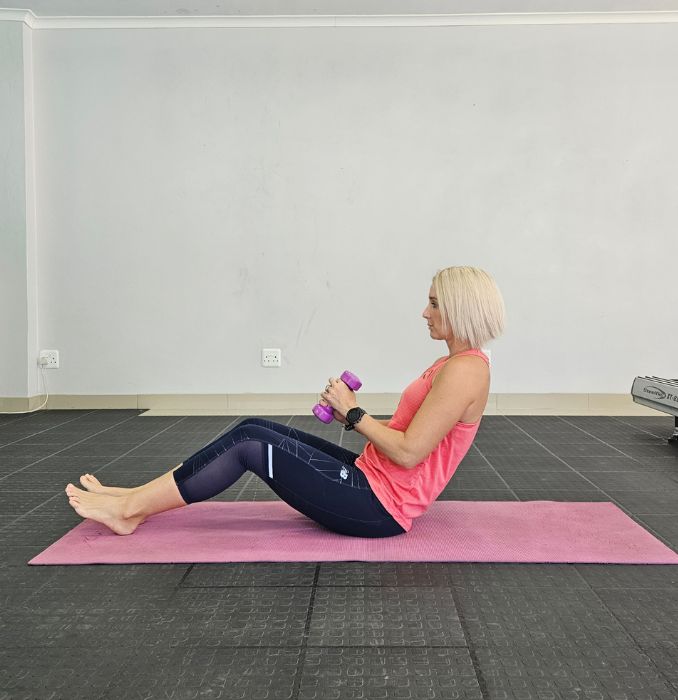
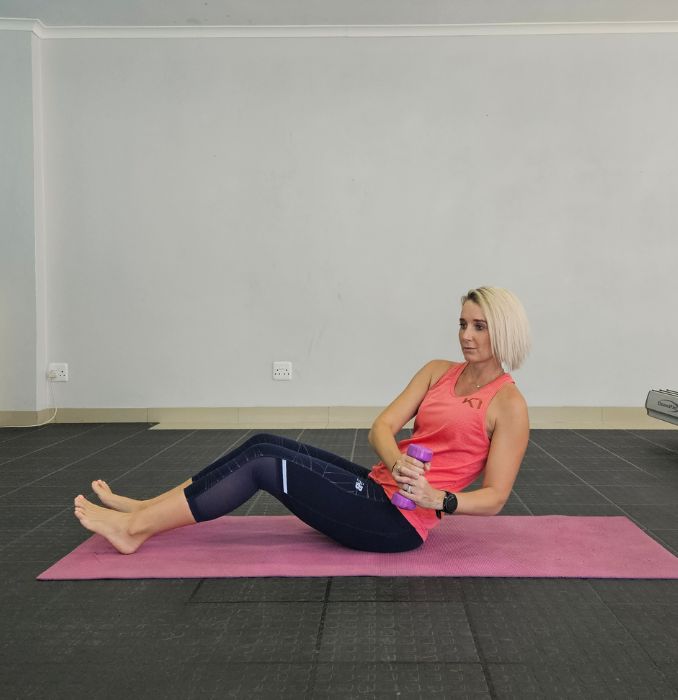
3. Full Supermans
For this groin injury exercise, you may need a small ball or a can of soup.
- Begin this exercise by lying on your stomach on the floor with your legs straight.
- Holding a small ball, extend both arms overhead.
- Engage your core and inhale deeply as you lift both arms and legs off the floor.
- Hold this position for 2 – 3 seconds, then slowly lower your arms and legs to the floor.
- Repeat the movement.
- Keep your neck neutral throughout these posture-correcting exercises.
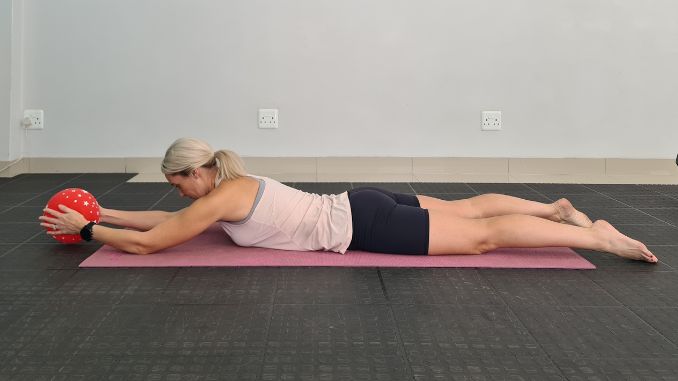
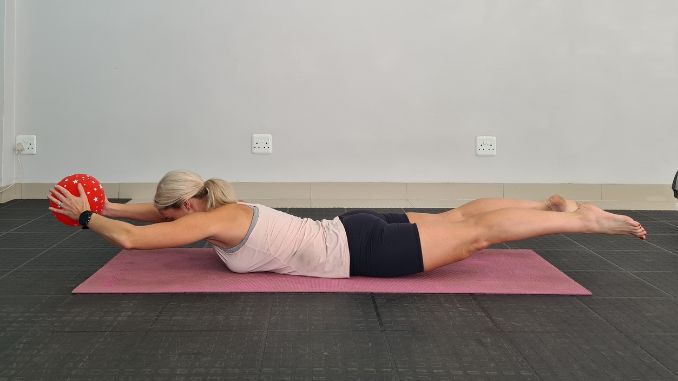
Incorporate these core exercises into your routine 2-3 times a week, gradually increasing the duration and intensity as you progress. Remember to maintain proper alignment and control throughout each exercise.
Tips For Proper Technique And Progression In Groin Exercises
To maximize the effectiveness of your Groin Injury Exercises and prevent further injury, it's important to follow proper technique and progress at a suitable pace.
Here are some tips to keep in mind:
By following these tips, you can ensure a safe and effective exercise routine that promotes healing [²], prevents future groin injuries, and improves overall fitness.
Conclusion
Healing and preventing further pulled groin and injuries require a holistic approach that includes targeted exercises, rest, and proper technique. By incorporating stretching, strengthening, core, and cardiovascular exercises into your routine, you can regain strength, flexibility, and stability in your groin muscles.
Remember to start slowly, listen to your body, and progress at a suitable pace. Consult a healthcare professional or a physiotherapist if you have any concerns or questions about your groin injury or exercise routine.
Caring for your groin is about short-term recovery and long-term health and well-being. By prioritizing your recovery and incorporating these exercises into your lifestyle, you can prevent future groin injuries and enjoy an active and pain-free life.
Relieve Sacroiliac Pain Fast! Discover the Sacroiliac Pain Solution that brings lasting relief and restores your mobility.





